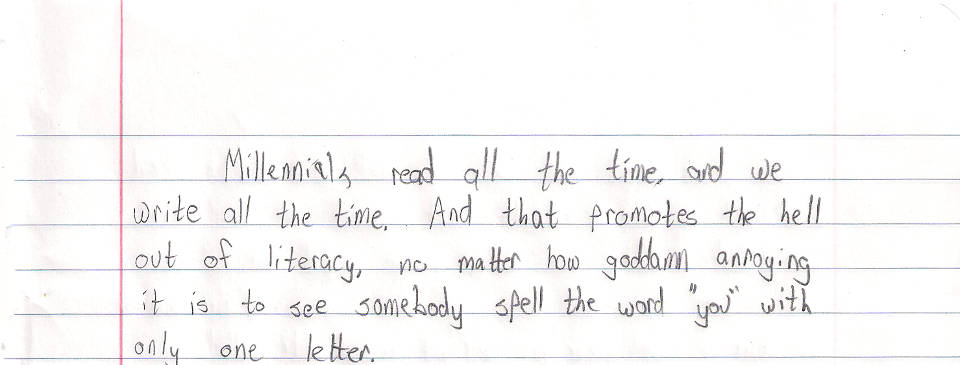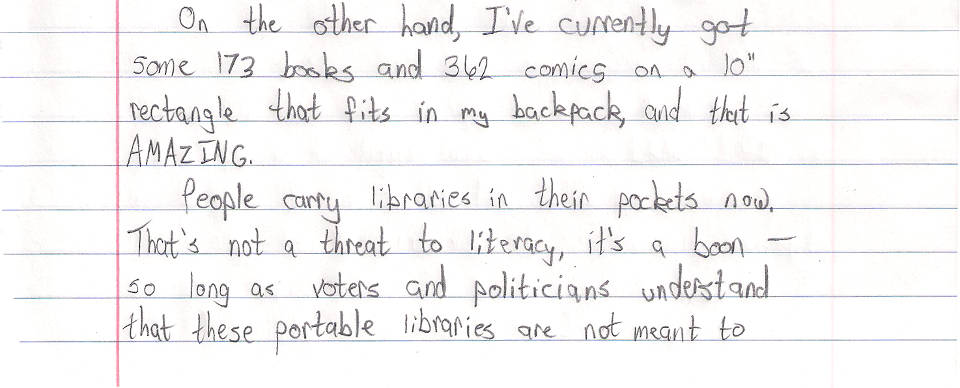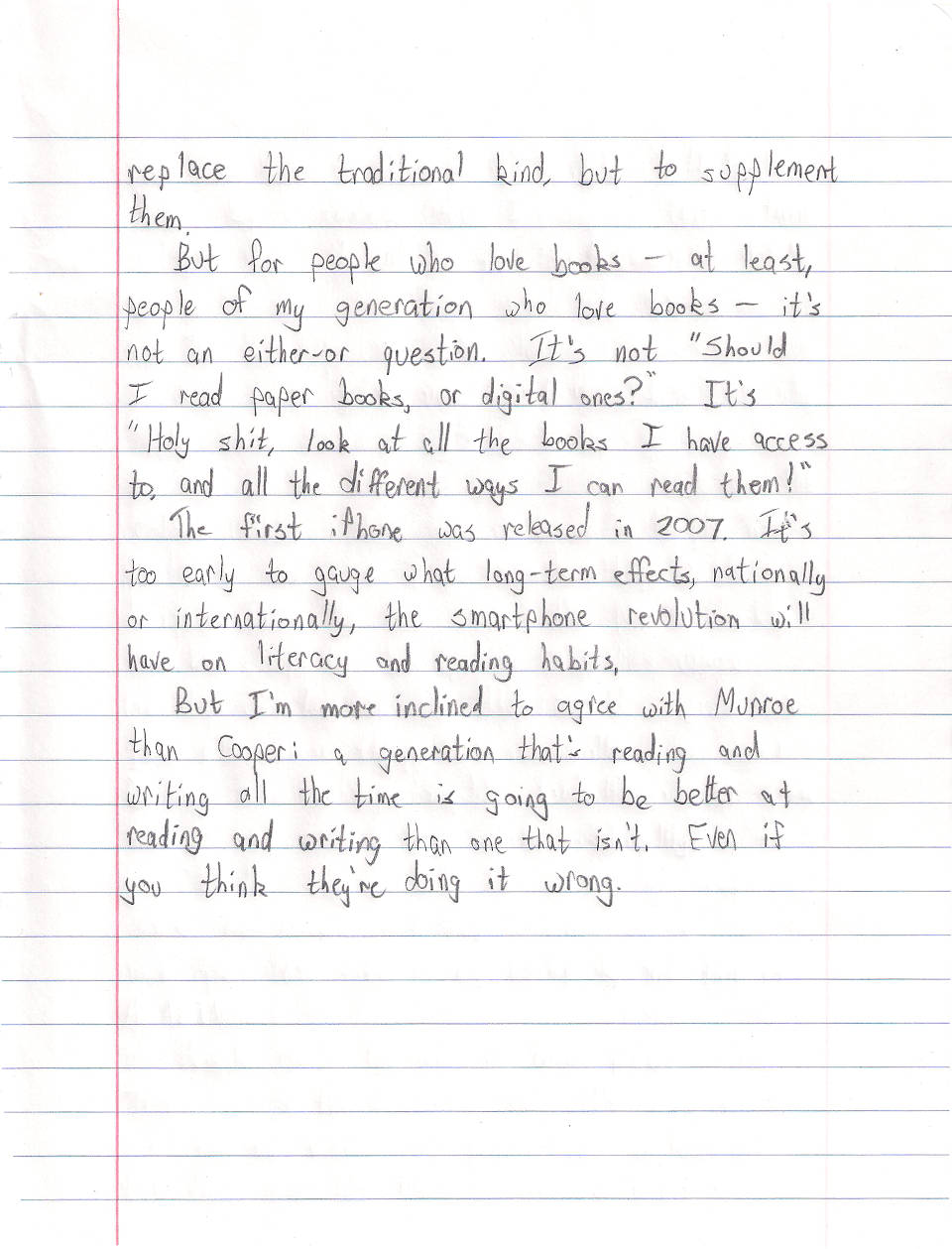Before I say anything else, let's get the obvious out of the way: nobody is obligated to contribute to any Kickstarter, ever. If you don't like Jonah Ray, if you're disappointed that the old cast isn't onboard, if you're strapped for cash or saving for Christmas or more interested in that Maya Angelou documentary or just plain don't feel like it, that's your prerogative. It's your money, and it's up to you how you want to spend it. And it's your time, and it's up to you whether you want to commit to a show that runs over 90 minutes an episode. I would like to make it clear that, while I'm about to make some criticisms of online negativity and some fans' tendency to prejudge, I'm not for one moment saying that you're obligated to feel excited about the new series, let alone to contribute money to it sight unseen.
That said, if you do watch the new MST3K, you should pay for it. Pirating MST3K would be a dick move.
Jonah Ray
Joel's announcement that Jonah Ray would be the new host sounded downright defensive:
Since this is the internet, I guess some people will hear this news and rush to declare – for better and for worse – "what this means for the future of MST3K." (In fact, since a lot of people guessed that it was Jonah's voice in our first video, that's already happening!)
I can't really tell you what kind of host Jonah is going to be, but I hope you'll give him a chance to show you. And even if you're familiar with Jonah's career, remember: that doesn't mean he'll bring the same exact approach to MST3K. I think a lot of you may be surprised. Plus, like the previous members of our cast, I think Jonah has great instincts and a lot of range. He's funny, he's wicked smart, and like I said, his heart's in the right place. He loves MST3K, he seems to understand what makes it so special, and most important, I know he takes the role seriously.
And man, a lot of people seem angry about Jonah Ray. I mean, it's the Internet, and everybody's always angry about something, and the people who really really hate something are almost never a representative sample. The Kickstarter's raised another half-a-million or so since the announcement, so it sure doesn't look like most people are too bothered by it.
I don't know much about Jonah Ray. I don't listen to the Nerdist podcast and I haven't seen his standup. Maybe I'd like it and maybe I wouldn't.
But I think Joel's right here: neither of those things is likely to be a good indicator of what he'll be like as host. And while it's true that each host is different and does the show his own way, it's also true that it's still the same show under Mike that it was under Joel. (Well, I think so, anyway; there are folks who disagree.)
There is a general feeling that the Mike era was meaner than the Joel era, that under Mike there was more of a tendency to outright insult the films, where Joel's era felt more like good-natured ribbing. (And in the host segments, Joel was certainly more friendly and deferential to the Mads than Mike was -- "What do you think, Sirs?")
(I've even seen folks in the Info Club comments section complain that there was too much sexual innuendo in the Sci-Fi Channel era, and...well, Jesus, apparently MST3K fans are a sheltered bunch.)
And I think it's easy to see Jonah Ray take Mike's tack a bit more than Joel's.
But, y'know, he's still a fan.
I was excited when i put on the jumpsuit...then i started to cry when they put the GIZMONICS patch. https://t.co/rJ217GXSUx
— Jonah Ray ( Heston ) (@jonahray) November 16, 2015
Being a fan doesn't automatically mean he'll be good in the role. But I think it does mean he'll show deference to the original show.
I mentioned in the previous post that Joel's got to thread the needle and make a show that's fresh and new and still noticeably MST3K. That might be true even moreso for Jonah as the new host.
and Friends
We don't know who else is going to be on the show yet. I've seen several people refer to an alleged Entertainment Weekly article that calims Felicia Day is playing the new Mad and Baron Vaughn and Hampton Yount are playing Servo and Crow (not sure which is which, but since I don't know who Vaughn or Yount are that's kind of a moot point). I have never seen a link to the alleged EW article in question, nor been able to find it on ew.com, so I am skeptical.
For the record I think Day would be a great choice, not just because I've wanted to see her play a villain since Dr. Horrible but because there's simply nobody with more experience at making a cult TV show on the Internet without studio backing.
As for Servo and Crow, well. It's definitely going to take some adjustment. On Servo in particular.
I'm of two minds on this. On the one hand, it's actually a refreshing change of pace seeing an angry fandom express the importance of the creative folks. If you're a regular reader of this blog, you've seen posts where I've excoriated fanboys who think characters are more important than their creators. People who think Scourge is more important than Ken Penders, that Thanos is more important than Jim Starlin, that Iron Man is more important than Jack Kirby.
It is, at least, really refreshing to see fans who think that MST3K is more than just a couple of puppets named Tom Servo and Crow, and that it matters who's operating those puppets, dammit.
And it does! It definitely does!
But we've been through this before. There's a well-known story in the fandom that when Josh Weinstein left the show and Kevin Murphy took over as Tom Servo, a fan mailed him a six-foot-long banner saying "I hate Tom Servo's new voice."
Well, 25 years later, you'd be hard-pressed to find anybody who thinks Josh was a better Servo than Kevin. (Sorry, Josh.)
And while there are people who don't like Bill Corbett as Crow, I think he was great. I still have a "You know you want me, baby!" T-shirt around here somewhere.
I think the fans need to thread the needle too, in our own way: while it's totally commendable (and encouraged!) to acknowledge that just because a show's got Servo and Crow and a guy in a jumpsuit on the Satellite of Love riffing on cheesy movies doesn't mean it's going to be the same MST3K we know and love, that it's the people who made the show great.
But we should also acknowledge that just because there are new people in those roles doesn't mean it's going to be a bad show, either. Yes, it's going to be different. But different doesn't always mean bad. You don't have to be optimistic about the new show, but y'know, you don't have to be pessimistic about it either.
Of course, the show's not just about the people in front of the camera, either. And in my next post I plan on talking about the writers, the importance of the ensemble, and how continuity in the writers' room was one of the main reasons the old show stayed consistent even when the cast changed. That's one more challenge the new show's going to have.





































